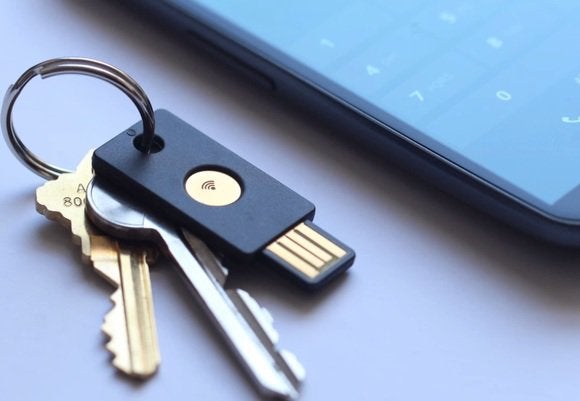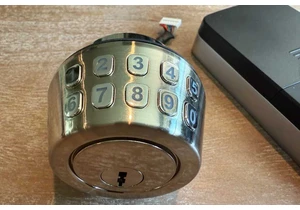Protecting your personal data isn’t just smart these days—it’s a necessity. As the world grows more and more connected, your private info becomes more and more valuable. Whether it’s using leaked info from website breaches to hack into your other accounts or holding your personal computer ransom for money, malicious evildoers won’t hesitate to ruin your day if it puts profits in their pockets.
All is not lost though. Following some basic security principles can help protect you from most of the attacks you’ll find on the World Wild Web. Better yet, these five easy security tasks should take only a short while to get set up. Do them now and sleep easier at night.
Further reading: Be safe! How I set up a ‘Paranoid PC’ to surf the risky web
1. Use a password manager

<div class="scrim" style="background-color: #fff" aria-hidden="true"></div>
</div></figure></div>On of the biggest security risks these days is password reuse. Major websites and services report massive data breaches on a shockingly regular basis. If you’re using the same email and password for multiple accounts, and any of those accounts leak, attackers can hack into your other ones using the information.
<div class="wp-block-product-widget-block product-widget is-half-width is-float-right">
<div class="product-widget__block-title-wrapper">
<h4 class="product-widget__block-title" id="the-best-overall-password-manager">
The best overall password manager </h4>
</div>
<div class="product-widget__content-wrapper">
<div class="product-widget__title-wrapper">
<h3 class="product-widget__title" id="dashlane">Dashlane</h3>
</div>
<div class="product-widget__image-outer-wrapper">
<div class="product-widget__image-wrapper">
<img decoding="async" width="15080" height="4013" class="product-widget__image" src="https://b2c-contenthub.com/wp-content/uploads/2022/06/Dashlane-Lockup-Green-3619X1385.png" loading="lazy" alt="Dashlane" srcset="https://b2c-contenthub.com/wp-content/uploads/2022/06/Dashlane-Lockup-Green-3619X1385.png?quality=50&strip=all 15080w, https://b2c-contenthub.com/wp-content/uploads/2022/06/Dashlane-Lockup-Green-3619X1385.png?resize=300%2C80&quality=50&strip=all 300w, https://b2c-contenthub.com/wp-content/uploads/2022/06/Dashlane-Lockup-Green-3619X1385.png?resize=768%2C204&quality=50&strip=all 768w, https://b2c-contenthub.com/wp-content/uploads/2022/06/Dashlane-Lockup-Green-3619X1385.png?resize=1200%2C319&quality=50&strip=all 1200w, https://b2c-contenthub.com/wp-content/uploads/2022/06/Dashlane-Lockup-Green-3619X1385.png?resize=1536%2C409&quality=50&strip=all 1536w, https://b2c-contenthub.com/wp-content/uploads/2022/06/Dashlane-Lockup-Green-3619X1385.png?resize=2048%2C545&quality=50&strip=all 2048w" sizes="(max-width: 300px) 100vw, 300px" />
</div>
</div>
<div class="review product-widget__review-details">
<img decoding="async" class="product-widget__review-details--editors-choice-logo" src="https://www.pcworld.com/wp-content/uploads/2021/09/PC-ED-CHOICE.png" alt="Editors' Choice" loading="lazy" /> <div class="product-widget__rating-and-review-link">
<div class="product-widget__review-details--rating">
<div class="starRating" style="--rating: 5;" aria-label="Rating of this product is 5 out of 5"></div>
</div> <a class="product-widget__review-link" href="https://www.pcworld.com/article/407081/dashlane-password-manager-review.html" target="_blank">Read our review</a>
</div>
</div>
<div class="product-widget__information">
<div class="product-widget__information--rrp-wrapper">
<span class="product-widget__information--rrp-label">
</span>
<span class="product-widget__information--rrp-value">
</span>
</div>
<div class="product-widget__pricing-details ">
<span class="product-widget__pricing-details--label">
Best Prices Today:
</span>
<span class="product-widget__pricing-details--links-wrapper">
<a class="product-widget__pricing-details--link" href="https://www.tkqlhce.com/click-100470607-12528922?sid=2-1-394001-5-389931-15360" target="_blank" data-vars-product-name="Dashlane" data-vars-product-id="389931" data-vars-category="Professional Software" data-vars-manufacturer-id="15360" data-vars-manufacturer="Dashlane" data-vars-vendor="Dashlane" data-vars-po="" data-product="389931" data-vars-link-position-id="005" data-vars-link-position="Product Sidebar" data-vars-outbound-link="https://www.tkqlhce.com/click-100470607-12528922" rel="nofollow">$4.99 at Dashlane</a> </span>
</div>
</div>
</div>
</div>Using strong, unique passwords for every account you own protects against that—but memorizing a different random password for every website you create an account for is next to impossible. That’s where password managers come in. These tools can create strong randomized passwords for you, store the information, and automatically fill in login fields on websites and software alike. Browsers are starting to offer basic password management tools too. They work in a pinch, and you shouldn’t feel ashamed about using Chrome’s password manager over nothing, but aren’t good enough overall. Investing in a proper password manager is well worth it (especially because many services offer a free tier).
Our guide to the best password managers can help you find the perfect fit for your needs.
2. Enable two-factor authentication

The FIDO Alliance’s U2F open standard lets compatible USB key drives and other small devices simplify two-factor authentication.
<div class="lightbox-image-container foundry-lightbox"><div class="extendedBlock-wrapper block-coreImage undefined"><figure class="wp-block-image large enlarged-image"><a class="zoom" href="https://images.techhive.com/images/article/2014/10/fido_alliance_u2f_usb_authentication_oct_2014-100526155-orig.jpg"><img decoding="async" data-wp-bind--src="selectors.core.image.enlargedImgSrc" data-wp-style--object-fit="selectors.core.image.lightboxObjectFit" src="" alt="fido alliance u2f usb authentication oct 2014" loading="lazy" /></a><figcaption class="wp-element-caption">The FIDO Alliance’s U2F open standard lets compatible USB key drives and other small devices simplify two-factor authentication.
</div></figure></div>Most major services now offer a two-factor authentication feature, especially if they handle more sensitive personal data. Turn it on whenever you can. If a hacker does somehow manage to gain access to your login information, 2FA can still save your bacon.
Two-factor authentication requires you to confirm your account two ways before you’re able to log in: with something you know, and something you have. The “something you know” is your username and password. The “something you have” comes courtesy of an authorized tool you have in your possession. Usually, 2FA requires you to input a code that’s either sent to you via text message or email when you try to log in on a device for the first time, or to grab a code from a supported 2FA app, or connect a security device devoted to account authentication. The exact method varies by service, and many offer several 2FA options. Without that code, hackers can’t break into your account even if they have your login information.
Some services, including Google accounts, are switching to passwordless “passkey” authentication that supercharge security without needing 2FA, but that technology is still in its early adoption days. Microsoft and Apple have also committed to adopting passkeys in time.
Our two-factor authentication guide explains the concept more deeply, and includes our picks for the best 2FA apps and hardware. Uber was hacked because an employee was tricked into sharing their 2FA code, however—even with two-factor authentication active, make sure you aren’t sharing those crucial codes with anybody else.
3. Stay safe with security software
Login to add comment
Other posts in this group


Microsoft has added an OCR function (Optical Character Recognition) t

If you’re reading this anywhere outside of China, you probably haven’


While AMD jacked up the price of its Threadripper Pro chips to equal

First there was Clippy. Now Microsoft Copilot has a face, with reacti

